PLACES FOR TOURISM IN DELHI
Swaminarayan Akshardham in New Delhi epitomizes 10,000 years of Indian culture in all its breathtaking grandeur, beauty, wisdom an d bliss. It brilliantly showcases the essence of India’s ancient architecture, traditions and timeless spiritual messages. The Akshardham experience is an enlightening journey through India’s glorious art, values and contributions for the progress, happiness and harmony of mankind.

Musical Fountain - Circle of Life (Evenings at Sunset - 15 min.)
A spectacular musical fountain show that depicts the cycle of birth, life, and death as described in Indian philosophy.
Garden of India
Sixty acres of lush lawns, gardens and exquisite bronze statues, honouring India's child heroes, valorous warriors, national patriots and great women personalities who inspire values and character.
Lotus Garden
A lotus-shaped garden echoing spirituality as expressed by philosophers, scientists, and leaders throughout history.
Azad Hind Gram Tourist Complex at Tikri Kalan is a project developed by Delhi Tourism to honour Netaji Subhash Chandra Bose and to create quality leisure space and wayside amenities for the citizens.Located within two kilometers of the Delhi Haryana border on NH-10, the architecture of the project is inspired by North Indian achitectural style and the traditions of Indian craftsmanship.
The elaborate mosaic domes surrounding the museum and the memorial are the focus of the complex which offers the facilities of extensive plazas, an amphitheatre, tourist information centre, souvenir andgarden shop, food kiosks, a restaurant, public toilets, drinking water,
The elaborate mosaic domes surrounding the museum and the memorial are the focus of the complex which offers the facilities of extensive plazas, an amphitheatre, tourist information centre, souvenir andgarden shop, food kiosks, a restaurant, public toilets, drinking water,
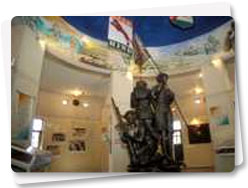
public telephone andconvention facilities.
Location: Tikri Kalan, NH 10,
Rohtak Road, Near Delhi
Haryana border
Ph: 28353102
Nearest Metro Station: Mundka
Timings: 10am to 6pm
Days Closed: National Holidays
Entry: Free
Photography: Permission Required
Nearest Metro Station: Mundka
Timings: 10am to 6pm
Days Closed: National Holidays
Entry: Free
Photography: Permission Required
Bahai Temple
Location: Near Kalkaji Temple,
East of Nehru Place
Nearest Metro Station: Kalkaji
Mandir
Open: Tue-Sun;
Nearest Metro Station: Kalkaji
Mandir
Open: Tue-Sun;
Mondays closed
Timings: 9am to 7pm
Entry: Free
Photography: Permission
Timings: 9am to 7pm
Entry: Free
Photography: Permission
required
East of Nehru place, this temple is built in the shape of a lotus flower and is the last of seven Major Bahai's temples built around the world. Completed in1986 it is set among the lush green landscaped gardens.
The structure is made up of pure white marble The architect Furiburz Sabha chose the lotus as the symbol common to Hinduism, Buddhism,
The structure is made up of pure white marble The architect Furiburz Sabha chose the lotus as the symbol common to Hinduism, Buddhism,
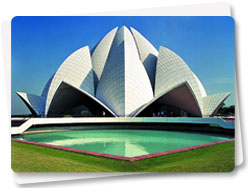
Jainism and Islam. Adherents of any faith are free to visit the temple and pray or meditate.
Around the blooming petals there are nine pools of water, which light up, in natural light. It looks spectacular at dusk when it is flood lit.
Around the blooming petals there are nine pools of water, which light up, in natural light. It looks spectacular at dusk when it is flood lit.
Birla Mandir
Location: Near Gole Market,
Mandir Marg, Connaught Place
Nearest Metro Station: RK
Ashram Marg
Timings: 6am to 10pm (best to
visit during morning and evening
aarti)
Entry: Free
Days Closed: None
Photography: Not allowed in
prayer hall
Nearest Metro Station: RK
Ashram Marg
Timings: 6am to 10pm (best to
visit during morning and evening
aarti)
Entry: Free
Days Closed: None
Photography: Not allowed in
prayer hall
Laxmi Narayan Temple, also known as Birla Mandir, is one of Delhi's major temples and a major tourist attraction. Built by the industrialst G.D. Birla in 1938, this beautiful temple is located in the west of Connaught Place.

The temple is dedicated to Laxmi (the goddess of prosperity) and Narayana (The preserver). The temple was inaugurated by Mahatma Gandhi on the condition that people of all castes will be allowed to enter the temple.
Humayun's Tomb
Location: Opp. Dargah
Nizamuddin,
Mathura Road
Metro Station: JLN Stadium
Open: Daily
Timings: Sunrise to sunset
Entry Fee: 10 (Indians),
10 (Indians),
 250 (foreigners)
250 (foreigners)
Photography Charges: Nil
(`25 for video filming)
Metro Station: JLN Stadium
Open: Daily
Timings: Sunrise to sunset
Entry Fee:
 10 (Indians),
10 (Indians), 250 (foreigners)
250 (foreigners)Photography Charges: Nil
(`25 for video filming)
Located near the crossing of Mathura road and Lodhi road, this magnificent garden tomb is the first substantial example of Mughal architecture in India.
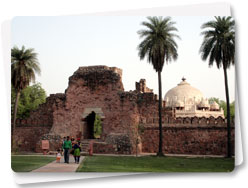
It was built in 1565 A.D. nine years after the death of Humayun, by his senior widow Bega Begam. Inside the walled enclosure the most notable features are the garden squares (chaharbagh) with pathways water channels, centrally located well proportional mausoleum topped by double dome.
There are several graves of Mughal rulers located inside the walled enclosure and from here in 1857 A.D; Lieutenant Hudson had captured the last Mughal emperor Bahadur Shah II.
India Gate
Location: Near Rajpath
Metro Station: Pragati Maidan
Timings: Morning to Night
Entry: Free
Days Closed: None
Photography Charges: Nil
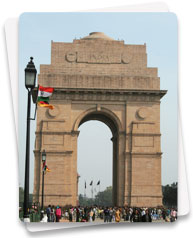
At the centre of New Delhi stands the 42 m high India Gate, an "Arc-de-Triomphe" like archway in the middle of a crossroad. Almost similar to its French counterpart, it commemorates the 70,000 Indian soldiers who lost their lives fighting for the British Army during the World War I. The memorial bears the names of more than 13,516 British and Indian soldiers killed in the Northwestern Frontier in the Afghan war of 1919.
The foundation stone of India Gate was laid by His Royal Highness, the Duke of Connaught in 1921 and it was designed by Edwin Lutyens. The monument was dedicated to the nation 10 years later by the then Viceroy, Lord Irwin. Another memorial, Amar Jawan Jyoti was added much later, after India got its independence. The eternal flame burns day and night under the arch to remind the nation of soldiers who laid down their lives in the Indo-Pakistan War of December 1971.
The foundation stone of India Gate was laid by His Royal Highness, the Duke of Connaught in 1921 and it was designed by Edwin Lutyens. The monument was dedicated to the nation 10 years later by the then Viceroy, Lord Irwin. Another memorial, Amar Jawan Jyoti was added much later, after India got its independence. The eternal flame burns day and night under the arch to remind the nation of soldiers who laid down their lives in the Indo-Pakistan War of December 1971.
Jama Masjid
Location: Off Netaji Subhash
Marg, west of Red Fort
Metro Station: Chawri Bazaar
Open: All days of the week
Timings: 7am to Noon,
1.30pm to 6.30pm.
Metro Station: Chawri Bazaar
Open: All days of the week
Timings: 7am to Noon,
1.30pm to 6.30pm.
Tourists not allowed during
prayer hours
Entry Fee: Free
Photography: 200
200
Entry Fee: Free
Photography:
 200
200
This great mosque of Old Delhi is the largest in India, with a courtyard capable of holding 25,000 devotees. It was begun in 1644 and ended up being the final architectural extravagance of Shah Jahan, the Mughal emperor who built the Taj Mahal and the Red Fort.
The highly decorative mosque has three great gates, four towers and two 40 m-high minarets constructed of strips of red sandstone and
The highly decorative mosque has three great gates, four towers and two 40 m-high minarets constructed of strips of red sandstone and

white marble. Travellers can hire robes at the northern gate. This may be the only time you get to dress like a local without feeling like an outsider so make the most of it
Jantar Mantar
Location: Parliament Street,
Connaught Place
Metro Station: Patel Chowk
Open: All days
Timings: Sunrise to Sunset
Entry Fee: 5 (Indians),
5 (Indians),  100
100
(foreigners)
Photography Charges: Nil (`25
for video filming)
Connaught Place
Metro Station: Patel Chowk
Open: All days
Timings: Sunrise to Sunset
Entry Fee:
 5 (Indians),
5 (Indians),  100
100(foreigners)
Photography Charges: Nil (`25
for video filming)
Jantar Mantar (Yantra - instruments, mantra - formulae) was constrcted in 1724. Maharaja Jai Singh of Jaipur who built this observatory went on to build other observatories in Ujjain , Varanasi and Mathura. Jai Singh had found the existing astronomical instruments too small to take correct measurements and so he built these larger and more accurate instruments.
The instruments at Jantar Mantar are fascinating for their ingenuity, but
The instruments at Jantar Mantar are fascinating for their ingenuity, but
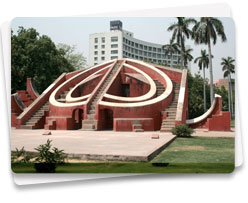
accurate observations can no longer be made from here because of the tall buildings around.
Lodi Tomb
Location: Main Lodi Road,
Beside India
International Centre
Metro Station: JLN Stadium
Open: Daily
Timings: Morning to Evening
Entry: Free
Photography Charges: Nil
International Centre
Metro Station: JLN Stadium
Open: Daily
Timings: Morning to Evening
Entry: Free
Photography Charges: Nil
The old Lady Willington Park, now known as Lodhi Garden, is dotted with monuments of Sayyid and Lodhi Periods, which include tombs mosques, and bridges .
The tombs of Muhammad Shah and Sikandar Lodhi are the good examples of octagonal tombs. Shish and Bara Gumbad are square tombs with imposing dome, turrets on corners and facades giving false impression of being double storeyed.
The tombs of Muhammad Shah and Sikandar Lodhi are the good examples of octagonal tombs. Shish and Bara Gumbad are square tombs with imposing dome, turrets on corners and facades giving false impression of being double storeyed.
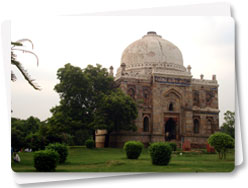
It is a favourite point for early morning walkers from the posh south Delhi colonies.
Parliament House
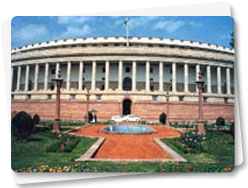
The Parliament house is a cirular colonnaded building . It also houses ministerial offices,numerous committee rooms and an excellent library as well. Conceived in the Imperial Style, the Parliament House consists of an open verandah with 144 columns.
The domed circular central hall with oak paneled walls and the three semi circular buildings are used for the Rajya Shabha and Lok Shabha meetings.
The domed circular central hall with oak paneled walls and the three semi circular buildings are used for the Rajya Shabha and Lok Shabha meetings.
Purana Quila
Location: Near Delhi Zoo,
Mathura Road
Nearest Metro Station:
Pragati Maidan
Open: All days
Entry Fee: 5 (Indians),
5 (Indians),  100
100
(foreigners)
Days Closed: None
Photography Charges: Free
(still camera); 25 (video
25 (video
camera)
Nearest Metro Station:
Pragati Maidan
Open: All days
Entry Fee:
 5 (Indians),
5 (Indians),  100
100(foreigners)
Days Closed: None
Photography Charges: Free
(still camera);
 25 (video
25 (videocamera)
One does not have to go far to see the old fort or Purana Quila standing stoically amidst wild greenery.Built on the site of the most ancient of the numerous cities of Delhi, Indraprastha, Purana Quila is roughly rectangular in shape having a circuit of nearly two kilometers.
The thick ramparts crowned by merlons have three gateways provided with bastions on either side. It was surrounded by a wide moat, connected to river Yamuna, which used to flow on the east of the fort. The northern gate way, called the Talaqui darwaza or the forbidden gateway, combines the typically Islamic pointed arch with Hindu Chhatris and brackets; whereas the southern gateway called the
The thick ramparts crowned by merlons have three gateways provided with bastions on either side. It was surrounded by a wide moat, connected to river Yamuna, which used to flow on the east of the fort. The northern gate way, called the Talaqui darwaza or the forbidden gateway, combines the typically Islamic pointed arch with Hindu Chhatris and brackets; whereas the southern gateway called the
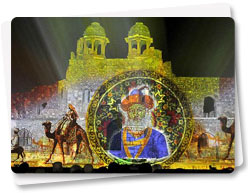
Humayun Darwaza also had a similar plan.
The massive gateway and walls of Purana Quila were built by Humayun and the foundation laid for the new capital, Dinpanah.
The massive gateway and walls of Purana Quila were built by Humayun and the foundation laid for the new capital, Dinpanah.
The work was carried forward by Sher Shah Suri,who displaced Humayun, Purana Quila is the venue for the spectacular sound and light show held every evening.
Qutab Minar
Location: Mehrauli
Nearest Metro Station:
Qutab Minar
Open: All days
Entry Fee: 10 (Indians),
10 (Indians),  250
250
(foreigners)
Days Closed: None
Photography Charges:---
Nearest Metro Station:
Qutab Minar
Open: All days
Entry Fee:
 10 (Indians),
10 (Indians),  250
250(foreigners)
Days Closed: None
Photography Charges:---
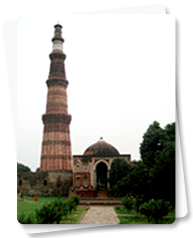
Qutab Minar is a soaring, 73 m-high tower of victory, built in 1193 by Qutab-ud-din Aibak immediately after the defeat of Delhi's last Hindu kingdom. The tower has five distinct storeys, each marked by a projecting balcony and tapers from a 15 m diameter at the base to just 2.5 m at the top. The first three storeys are made of red sandstone; the fourth and fifth storeys are of marble and sandstone. At the foot of the tower is the Quwwat-ul-Islam Mosque, the first mosque to be built in India. An inscription over its eastern gate provocatively informs that it was built with material obtained from demolishing '27 Hindu temples'. A 7 m-high iron pillar stands in the courtyard of the mosque. It is said that if you can encircle it with your hands while standing with your back to it your wish will be fulfilled.
Safdarjang Tomb
Location: Intersection of
Safdarjung Road and
Aurobindo Marg
Metro Station: Jor Bagh
Open: Daily
Timings: Sunrise to Sunset
Entry Fee: 5 (Indians),
5 (Indians),
 100 (foreigners)
100 (foreigners)
Photography Charges: Free (still
camera), 25 (video camera)
25 (video camera)
Metro Station: Jor Bagh
Open: Daily
Timings: Sunrise to Sunset
Entry Fee:
 5 (Indians),
5 (Indians), 100 (foreigners)
100 (foreigners)Photography Charges: Free (still
camera),
 25 (video camera)
25 (video camera)
Safdarjung's Tomb is the last enclosed garden tomb in Delhi in the tradition of Humayun's Tomb, though it if far less grand in scale. It was built in 1753- 54 as mausoleum of Safdarjung, the viceroy of Awadh under the Mughal Emperor, Mohammed Shah.
It has several smaller pavilions with evocative names like Jangli Mahal, (Palace in the woods), Moti Mahal (Pearl Palace) and Badshah Pasand(King's favourite).
It has several smaller pavilions with evocative names like Jangli Mahal, (Palace in the woods), Moti Mahal (Pearl Palace) and Badshah Pasand(King's favourite).
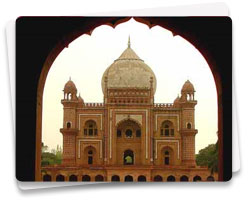
The complex also has a madarsa. The archaeological Survey of India maintains a library over the main gateway.
Red Fort
Location: Netaji Subhash Marg
Metro Station: Chandni Chowk
Open: Tue-Sun; Mondays closed
Timings: Sunrise to Sunset
Entry Fee: 10 (Indians),
10 (Indians),  250
250
(foreigners)
Photography: Nil ( 25 for video
25 for video
filming)
Sound & Light Shows: 6pm
Metro Station: Chandni Chowk
Open: Tue-Sun; Mondays closed
Timings: Sunrise to Sunset
Entry Fee:
 10 (Indians),
10 (Indians),  250
250(foreigners)
Photography: Nil (
 25 for video
25 for videofilming)
Sound & Light Shows: 6pm
onwards in English and Hindi
Ticket: 80 (adults),
80 (adults),
Ticket:
 80 (adults),
80 (adults), 30 (children)
30 (children)
The Red sandstone walls of the massive Red Fort (Lal Qila) rise 33-m above the clamour of Old Delhi as a reminder of the magnificent power and pomp of the Mughal emperors. The walls, built in 1638, were designed to keep out invaders, now they mainly keep out the noise and confusion of the city.
The main gate, Lahore Gate, is one of the emotional and symbolic focal points of the modern Indian nation and attracts a major crowd on eachIndependence Day.
The main gate, Lahore Gate, is one of the emotional and symbolic focal points of the modern Indian nation and attracts a major crowd on eachIndependence Day.
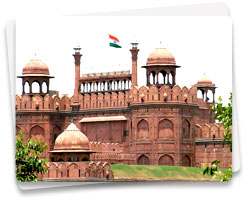
The vaulted arcade of Chatta Chowk, a bazaar selling tourist trinkets, leads into the huge fort compound. Inside is a veritable treasure trove of buildings, including the Drum House, the Hall of Public Audiences, thewhite marble Hall of Private Audiences, the Pearl Mosque, Royal Baths and Palace of Color.
An evening sound and light show re-creates events in India's history connected with the fort.
An evening sound and light show re-creates events in India's history connected with the fort.
No comments:
Post a Comment